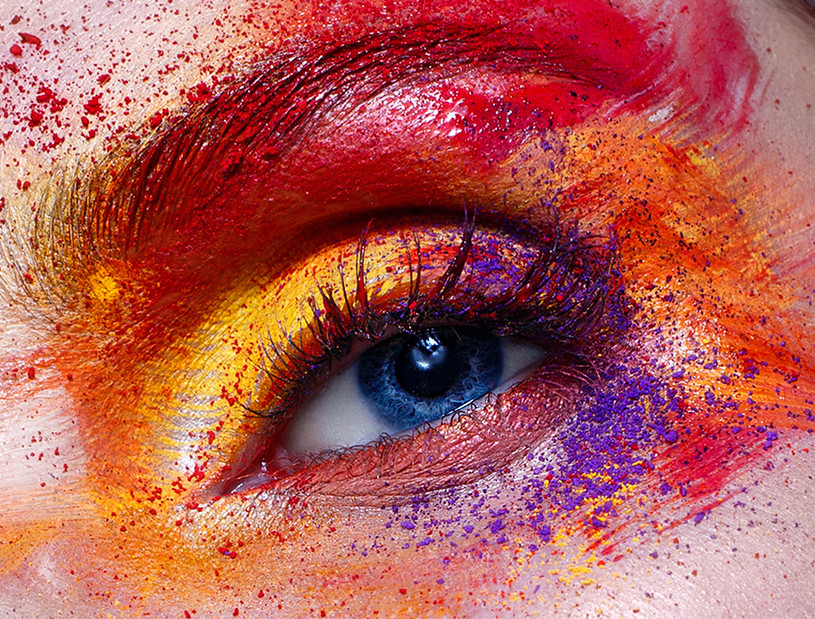TATTOO-ASSOCIATED REACTIONS IN DERMATOLOGY
Complications in permanent makeup

Each master may encounter a skin reaction to the introduction of pigment. We propose to consider the most common complications caused by dyes used in permanent makeup.
Tatyana Svyatenko, State Institution "DMA of the Ministry of Health of Ukraine", Center for Dermatology and Cosmetology of Professor Svyatenko (Dnipro)
Dinara Sagnaeva, JSC "Astana Medical University" (Astana)
Evgeny Vasilchuk, TMO "Dermatovenereology" (Kyiv)
Each master may encounter a skin reaction to the introduction of pigment. We propose to consider the most common complications caused by dyes used in permanent makeup.
The relevance of writing this article was dictated by the increase in the number of people using tattoos for cosmetic purposes, such as permanent makeup of lips, eyes, eyebrows. As well as the lack of a management system for the tattooing procedure and certification of products for permanent makeup and an increase in the frequency of tattoo-associated medical complications.
The most common tattoo-associated dermatological complications can be classified as follows: allergic, bacterial, viral, neoplastic, exacerbation of existing dermatoses (Koebner phenomenon).
Patient, 37 years old, granulation cysts after lip tattooing.
The patient, 29 years old, has a history of psoriasis, the occurrence of Koebner's symptom at the site of the tattoo
Currently, it is customary to use the following tactics for managing patients:
- topical glucocorticosteroids (including intralesional administration and phonophoretic administration);
- laser therapy (use of various lasers).
Our observations
A 52-year-old patient addressed a dermatologist with complaints that 2–3 months after the tattooing procedure, persistent swelling appeared in the area of pigment injection, redness, and intense itching (photo 1-2). The patient was prescribed therapy: antihistamines - no effect, topical superstrong steroids - no effect.
Photo 1. Clinical picture before treatment.
Photo 2. Dermoscopic picture before treatment.
In order to conduct a differential diagnosis, the patient underwent a punch biopsy followed by a histological examination.
Result: the morphological picture corresponds to sarcoidosis that developed at the site of the tattoo. As is known, standard dermatological treatment includes the use of systemic corticosteroids in low doses or intralesional corticosteroids.
The patient was also prescribed the following alternative treatment: laser ablation (Er:Yag laser, ultrashort pulse 350–400 J). After the treatment, a positive clinical and aesthetic result was obtained (photo 3-4).
Photo 3. Clinical picture after treatment.
Photo 4. Dermoscopic picture after treatment.
Thus, the described cases testify to the importance of sufficient professional training in the section "tattoo-associated reactions" for all professionals practicing in the field of tattooing.
It must be remembered that timely prevention of complications consists, first of all, in a careful history taking, prescribing, if necessary, prophylactic doses of antiviral drugs, an adequate rehabilitation period, the use of sunscreens, and disposable instruments.
Training and education can significantly reduce the number of complications that occur.
| Color | Dye |
| Red | Mercury sulfide (cinnabar), cadmium selenide, iron hydrate, sandalwood, brazilwood, aromatic azo compounds including naphthol-AS, quinacridone |
| Green | Chromium oxide, lead chromate, copper or aluminum phthalocyanine, malachite (contains copper), ferrocyanides |
| Violet | Ammonium manganese periphosphate, aluminum salts, quinacridone, diaxazine/carbazole |
| Blue | Cobalt oxide, chromium oxide, copper phthalocyanine |
| Yellow | Cadmium sulfide, turmeric, chromium yellow (mixture of lead chromate and lead sulfide) |
| Black | Indian ink |
| Brown | iron oxide |
| Dye components | Complications |
| Red pigment containing mercury | Contact allergic dermatitis, lichenoid reaction |
| Yellow | photoinduced allergic reaction |
| Red pigment containing mercury; green pigment containing chromium; blue pigment containing cobalt; purple pigment containing manganese | Granulomatous reaction |
| Red pigment containing mercury; green pigment containing chromium; blue pigment containing cobalt | Pseudolymphomatous reaction |
| Violet pigment containing manganese | Granulomatous reaction |
| Type of laser | Wavelength | Pulse duration | Flow J/cm2 | Target (tattoo color) |
| Nd:YAG | 1084 | 10 | 6-12 | Black, blue |
| Nd:YAG double frequency | 532 | 10 | 2-12 | Red, orange, purple |
| Ruby | 694 | 25 | 8-10 | Black, blue, green |
| alexandrite | 755 | 50-100 | 4.5-8 | Black, blue, green |
Read also
- Oily skin and permanent makeup: acceptable techniques
- 7 reasons, or Why lasers for PM removal break down?
- Work on oily skin: factors affecting the quality of permanent makeup
- Dermatology for PM Artists: Tattoo-Associated Reactions
- Possibilities of permanent makeup: camouflage
- Tattoo-associated reactions
- Koebner reaction